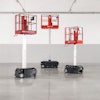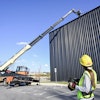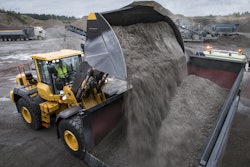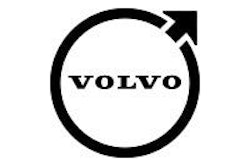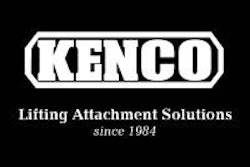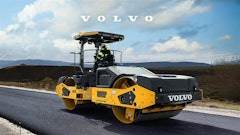There is no reason a wheel loader has to be dedicated to material loading applications. Specialty buckets and attachments can unlock the investment in your loaders by increasing productivity and expanding the work envelope.
"Wheel loaders can be adapted with numerous attachments to accomplish many jobsite functions," notes Traci Black, Kenco. "They are excellent loose material handlers. The maneuverability and large buckets allow for quick and precise moving and loading scenarios."
Nick Rogers, product specialist at Liebherr, asserts, "There are a number of applications where the use of a specialty attachment strongly benefits the performance of the wheel loader and the productivity of the operation." Some of them include:
- Pipe handling operations: Pipe grapples or pipe forks are normal "tools of the trade."
- Large stockpiling applications: A high-dump or roll-out bucket is beneficial in these tasks.
- Scrap handling: Attachments from utility forks, to car body forks, to light material buckets and others can be used.
- Mulch/wood chip/tree bark handling: Light material buckets are the usual attachment for productive operation in this environment.
- Log handling: Log grapple attachments provide substantial results when paired with the right size loader for the material being handled.
- Waste handling: Waste/refuse buckets are specifically designed for these applications.
Match to the job
The key to maximizing utilization is to start with the right machine. Wheel loaders can be divided into two basic categories: those with Z-bar linkages and those with a tool-carrier or parallel-lift configuration. The appropriate choice depends on your application.
"If you use forks 75% of the time, look strongly into getting a tool-carrier or a parallel-lift front," says Chad Ellis, product specialist with Doosan Infracore Construction Equipment. "If you use the forks only 25% of the time, you want a Z-bar, and you'll have to work around the fact that you don't have complete parallel lift through the boom up cycle."
The ability to switch attachments quickly adds a new dimension. "In a road work application, you frequently swap from forks to a bucket. Being able to swap quickly and easily is key," notes Ellis.
He adds that there really are no compatibility issues today. "It's easy to find a quick coupler that will allow a contractor to utilize existing attachments with almost any brand of wheel loader."
Quick couplers come in both mechanical and hydraulic versions. Kenco offers both types. "Typically, we can equip any size loader with a coupler," says Black. "In some cases, we have provided couplers to hook to one brand of machine but pick another. This type of coupler allows the same attachment use with different brands of loaders."
Even given the attachment compatibility, there are differences that exist between quick couplers. "There are some differences on how the quick coupler is made," says Dan Rafferty, Volvo Construction Equipment. "There are important features and benefits - one being visibility. We have developed our attachment bracket over the years to maximize visibility."
Compact wheel loaders can offer an attractive alternative to large skid-steer loaders, since attachments can typically be shared between machine types. "The main part of our company [focuses] on skid-steer loader attachments," says Ron Peters, product manager, CEAttachments. "Many of the same attachments can be used on compact wheel loaders."
For instance, the Volvo L25 allows the fitting of a skid-steer loader bracket on the machine. "At that point, everything that is available for a skid steer can fit onto the compact wheel loader," says Rafferty. "It really starts to become a universal machine around the clock."
A compact wheel loader may be the better solution if you spend 75% of the time loading. "You can put a trencher or an auger onto a small wheel loader and use it almost interchangeably with a skid steer," says Rafferty. "There are some pros and cons with doing that."
In some cases, the articulated steering on a compact wheel loader can be an advantage. Articulation is easier on finished surfaces than skid steering.
"When you are using different attachments in a landscape application, you are not ripping up the turf like you are with a skid steer," says Rafferty. "If a yard has a crushed stone base, you get in there with a skid steer and for every two or three loads that you do, you actually have to come back and redo your driveway to smooth it out. With a compact wheel loader that has articulation, basically you don't even do any damage to the surface."
There are some performance considerations, however. You need to match the available hydraulic capacities to the attachment.
"It is important to know the capacity of your wheel loader before you start sizing that attachment," Peters emphasizes. "Things that come into play are the size and hydraulic flow. Generally, compact wheel loaders have less hydraulic flow than a skid steer. You cannot use a high-flow attachment on a wheel loader."
Understand the basics
"Wheel loaders should never be equipped with attachments that are outside their design parameters," Black stresses. "Not only does this slow production down, it also creates safety issues."
It's important to know your uses for the machine and its limitations. "For a wheel loader, you have full turn tip radius, weight and capacity limitations," says Rafferty. "[Those are things] we take into consideration whenever we approve an attachment. We want to make sure the bucket is not too big - that it is not going to cause an undue safety hazard for the operator or anybody around the operator. We want to make sure there is not going to be any undue wear and tear on the machine."
Ellis agrees, noting, "If you already have the machine, you need to know exactly what the machine can handle when you look at attachments. Make sure you have all of the correct specs on flow and what the pressures are going to be so that you know the machine can handle the attachment."
The weight of the attachment and other dimensions are also an issue. In most cases, the geometry of a heavier attachment is very different from the standard general-purpose bucket, Rogers points out.
"Along with the weight, the height, depth, width and center of gravity of the attachment play a pivotal role in the lifting capacity of the loader," he continues. "Taking into account the lifting capacity of the loader, the weight and dimensions of the attachment and the specific weight of the material being handled are necessary steps to assure the attachment is right for the loader and for the application."
The weight of the attachment will have a major impact on productivity. "For every pound you add in the actual attachment, it takes away the amount of material you can put into the bucket, into the system," says Rafferty. "If you add more weight at a further distance out, it is more detrimental than the same amount of weight closer to the coupler."
Since the size of the wheel loader and the weight of the attachment are to scale, you will notice a 200-lb. difference on a compact wheel loader more than on a larger machine.
Beyond weight and dimensions, it's important to make sure an attachment is approved for use on a designated wheel loader. "There are people out there making things for our machines that, to be honest with you, are not safe and are not good for the machines," says Rafferty. "It is not always the hydraulics that we are worried about. There are other things for operator safety."
Take a mulching attachment, for example. "When we know that a mulching attachment is going onto a machine, we are going to make sure it has guarding," says Rafferty. "We are going to make sure it has shatter-proof glass."
Along with the manufacturer, your dealer can make sure you get the attachment best suited to the machine or task. "Every customer does not have a unique situation," says Rafferty. "There are crossovers. Talk to your dealer." They have probably seen similar applications and can help you get the right tool for the task.
Choose the Right Loader Bucket
Specialty buckets are the most popular attachments on larger wheel loaders. They promise to increase productivity and cut operating costs.
Liebherr offers general-purpose buckets in rehandling and excavation styles, as well as a variety of light material, side dump, high-dump (roll-out) and multi-purpose buckets. "There are certainly advantages to using buckets such as light material buckets, high-dump or even side-dump buckets in applications rather than using a general-purpose bucket," says Nick Rogers. "For instance, if a contractor handling a light material needs a little more dump-over height in a specific situation, a high-dump (roll-out) bucket would be an ideal match for the application."
"There are a lot of factors you need to look at on a jobsite along with the material before you choose a bucket," says Chad Ellis, Doosan. "What are you working in? You can be working in some highly abrasive substances where you need a heavy-duty bucket even though the actual cubic weight per yard of that substance isn't great. Then you can be working in some highly abrasive substances that are very heavy."
When choosing a bucket, Ellis suggests you consider the following: What is the working environment? Will you be doing ground level work or full height dumping? What is the weight and density of the material being moved? And finally, what is the capacity of the machine you are using?
"Roll-out and side dump buckets will make a wheel loader more versatile in many working environments," says Traci Black, Kenco. "Roll-out buckets will give the operator a higher dump height, which allows them to clear the side boards of most trucks. Side dumps are great in tight areas. The machine can load a truck from the side or the front."
Consider the case of a rehandling application. "A lot of our customers were using GP buckets," says Dan Rafferty, Volvo Construction Equipment. "We went out and created a rehandling bucket." The bottom of the bucket is longer and has a lower overall height. "It gives you better visibility to the cutting edge and where the bucket is actually going. It also helps the bucket fill up a little more efficiently with less power required. We added a spill guard so you get a higher fill factor. Basically, that translates into the ability to move more material with lower fuel consumption."


